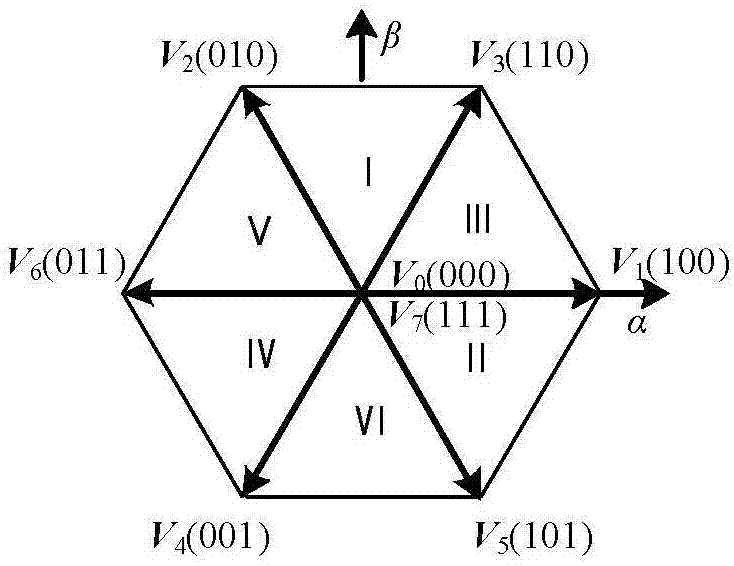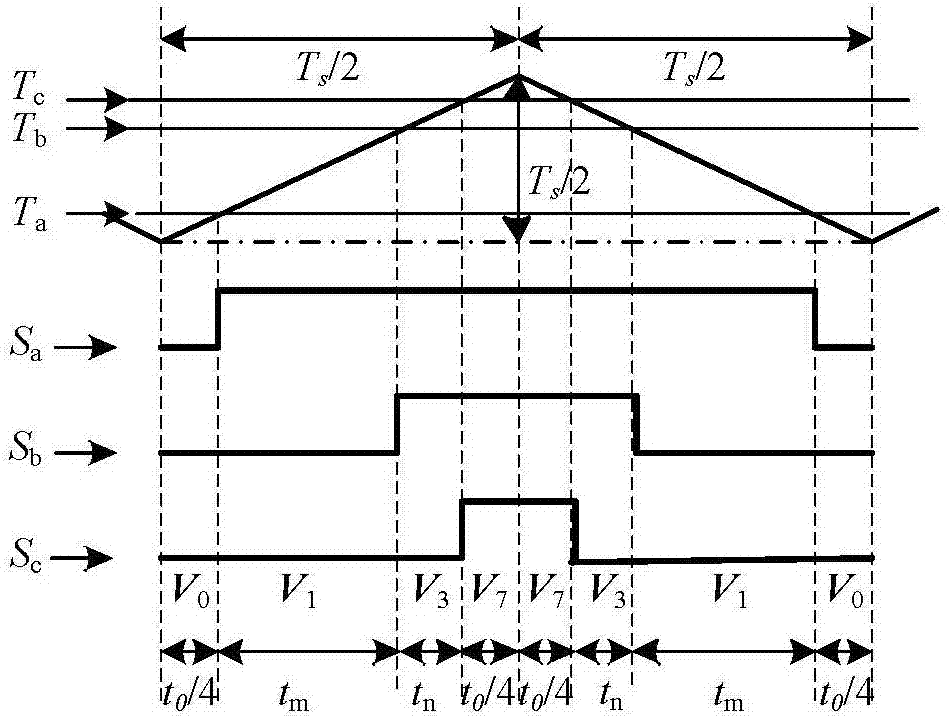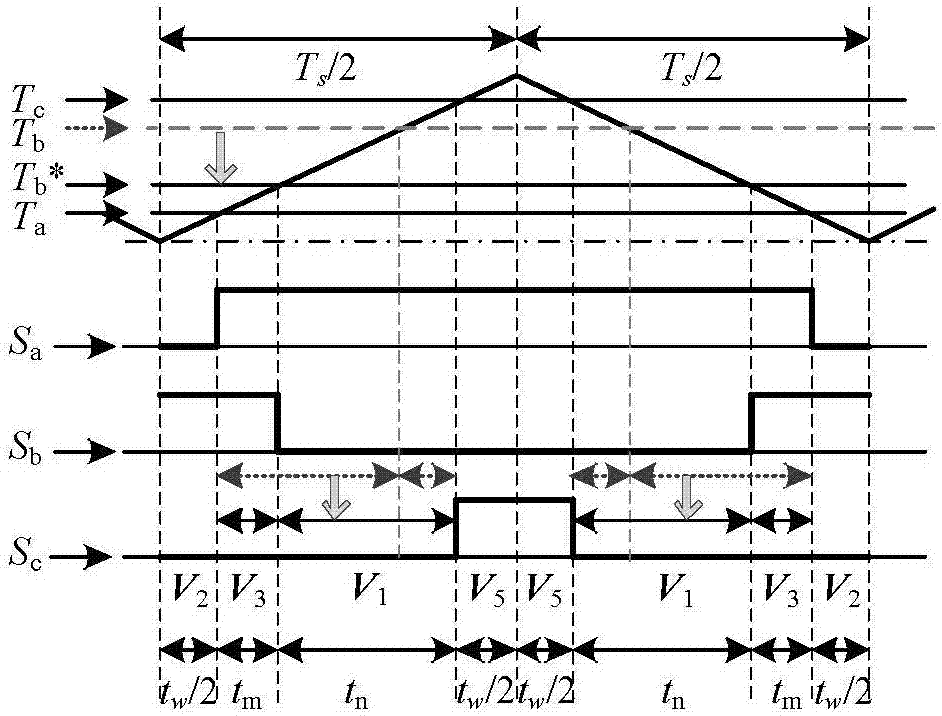Space voltage vector modulation method achieving common mode voltage minimization
A technology of space voltage vector and common mode voltage, which is applied in the field of power electronics, can solve the problem of reducing harmonic current and achieve the effect of less output current harmonics and less constant switching frequency
- Summary
- Abstract
- Description
- Claims
- Application Information
AI Technical Summary
Problems solved by technology
Method used
Image
Examples
Embodiment Construction
[0023] In the two-phase stationary coordinate system, the three-phase output voltage vectors of the inverter are marked sequentially, as shown in figure 1 As shown in the sector vector diagram, the 6 non-zero vectors just correspond to the 6 vertices of the regular hexagon, and the 2 zero vectors are distributed in the center of the regular hexagon, and the sectors are divided. By judging the sector where the reference voltage vector is located, two non-zero effective vectors are selected.
[0024] The principle of traditional SVPWM generating switch state is as follows: figure 2 shown. Taking sector III as an example, select the effective vector V 1 and V 3 . T a , T b , T c Respectively represent the switching tubes of the upper bridge arm of each phase at T s / 2, the switching state is output by comparing with the triangular carrier, and the period of the triangular carrier is T s . When T a , T b , T c When it is greater than the triangular carrier function, ...
PUM
 Login to View More
Login to View More Abstract
Description
Claims
Application Information
 Login to View More
Login to View More - R&D
- Intellectual Property
- Life Sciences
- Materials
- Tech Scout
- Unparalleled Data Quality
- Higher Quality Content
- 60% Fewer Hallucinations
Browse by: Latest US Patents, China's latest patents, Technical Efficacy Thesaurus, Application Domain, Technology Topic, Popular Technical Reports.
© 2025 PatSnap. All rights reserved.Legal|Privacy policy|Modern Slavery Act Transparency Statement|Sitemap|About US| Contact US: help@patsnap.com



